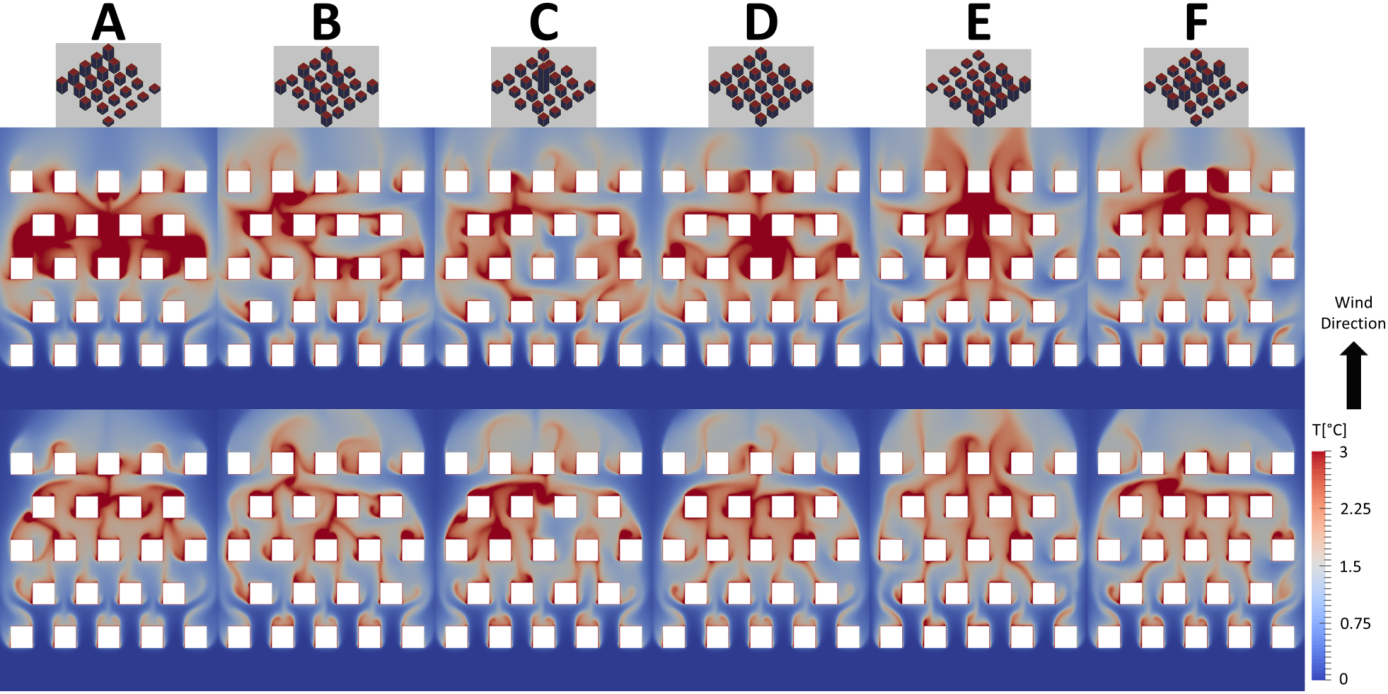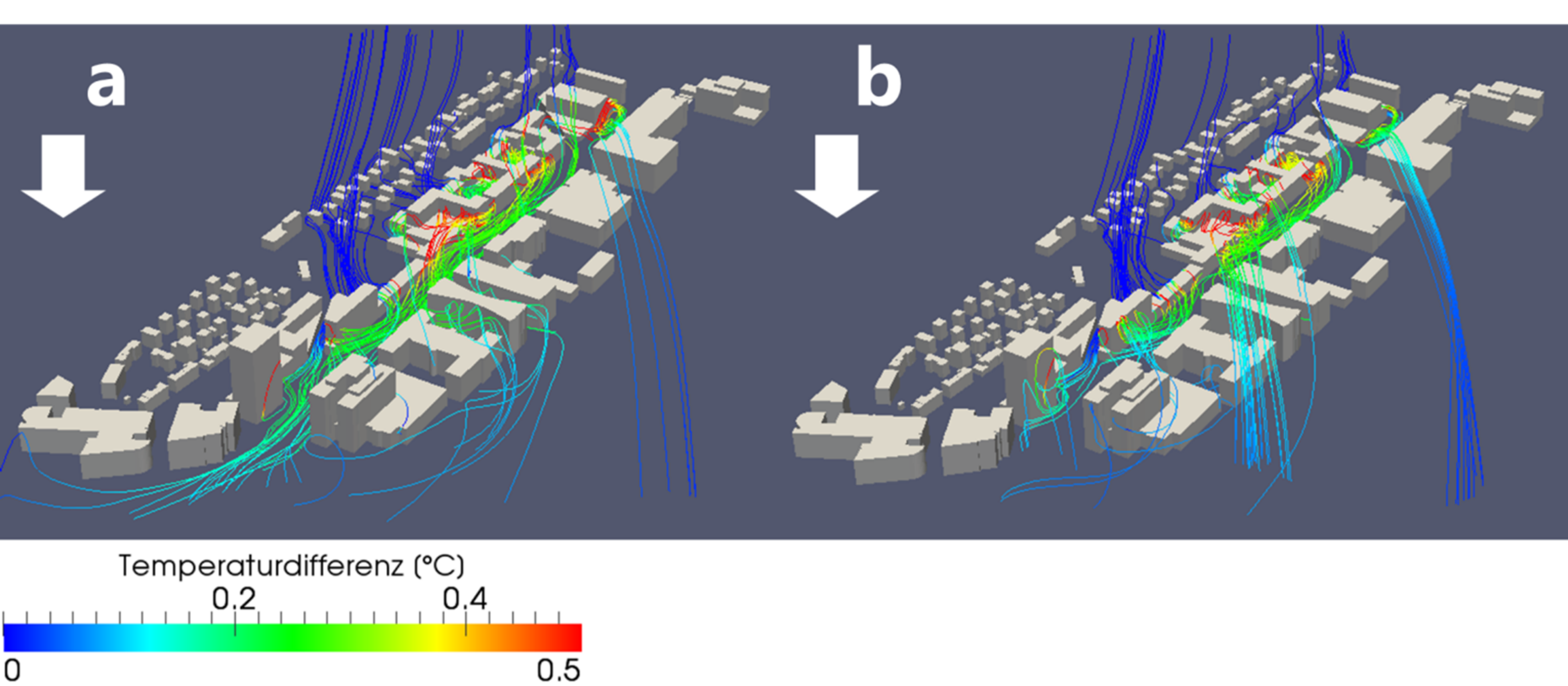Neighborhood scale urban climate modelling
Building morphology, urban heat removal and local heat islands
This study aims at analyzing the impact of different urban morphologies on the local microclimate in urban neighborhoods and the formation of local heat islands. The model is based on an on-way coupling of CFD (computational fluid dynamics) and building energy simulations (BES). Building surface temperatures are first determined with BES, then used in the CFD simulations as temperature boundary conditions to obtain the air temperatures. The simulations are conducted for different wind speeds to study the impact of buoyancy on the microclimate for the different building height topologies.
Apart from generic building morphologies, we also studied the development of local heat islands for realistic case studies of an urban neighborhood.
Publications
Allegrini J, Dorer V, Defraeye T, Carmeliet J. 2012a. An adaptive temperature wall function for mixed convective flows at exterior surfaces of buildings in street canyons. Building and Environment 49 (1): 55-66.
Allegrini J, Dorer V, Carmeliet J. 2012b. Influence of the urban microclimate in street canyons on the energy demand for space cooling and heating of buildings. Energy and Buildings 55: 823-832.
Allegrini J, Dorer V, Defraeye T, Carmeliet J. 2012c. Analysis of convective heat transfer at building façades in street canyons and its influence on the predictions of space cooling demand in buildings. Journal of Wind Engineering & Industrial Aerodynamics 104-106: 464-473.
Allegrini J, Dorer V, Carmeliet J. 2013. Wind tunnel measurements of buoyant flows in street canyons. Building and Environment 59: 315-326.
Allegrini J, Dorer V, Carmeliet J. 2014. Buoyant flows in street canyons: Validation of CFD simulations with wind tunnel measurements. Building and Environment 72: 63-74.
Allegrini J, Dorer V, Carmeliet J. 2015a. Coupled CFD, radiation and building energy model for studying heat fluxes in an urban environment with generic building configurations. Sustainable Cities and Society 19 (305): 385-394.
Allegrini J, Dorer V, Carmeliet J. 2015b. Influence of morphologies on the microclimate in urban neighbourhoods. Journal of Wind Engineering & Industrial Aerodynamics 144: 108-117.
Allegrini J, Carmeliet J: Simulations of local heat islands in Zürich with coupled CFD and building energy models. Urban Climate, DOI: 10.1016/j.uclim.2017.02.003, 2017 Allegrini J, Lopez B: The influence of angular configuration of two buildings on the local wind climate. Journal of Wind Engineering and Industrial Aerodynamics 156: 50-61, 2016
Allegrini J, Carmeliet J: Evaluation of the Filtered Noise Turbulent Inflow Generation Method. Flow, Turbulence and Combustion, DOI: 10.1007/s10494-016-9798-2, 2016
Defraeye, T., Blocken, B., and Carmeliet, J. 2011. An adjusted temperature wall function for turbulent forced convective heat transfer for bluff bodies in the atmospheric boundary layer. Build. Environ. 46 (11):2130-2141.
Immer M, Allegrini J, Carmeliet J: Time Resolved and Time Averaged Stereo-PIV Measurements of a Unit-Ratio Cavity. Experiments in Fluids 57 (6): 101, 2016
Moonen P, Allegrini J: Employing statistical model emulation as a surrogate for CFD. Environmental Modelling and Software 72: 77-91, 2015

